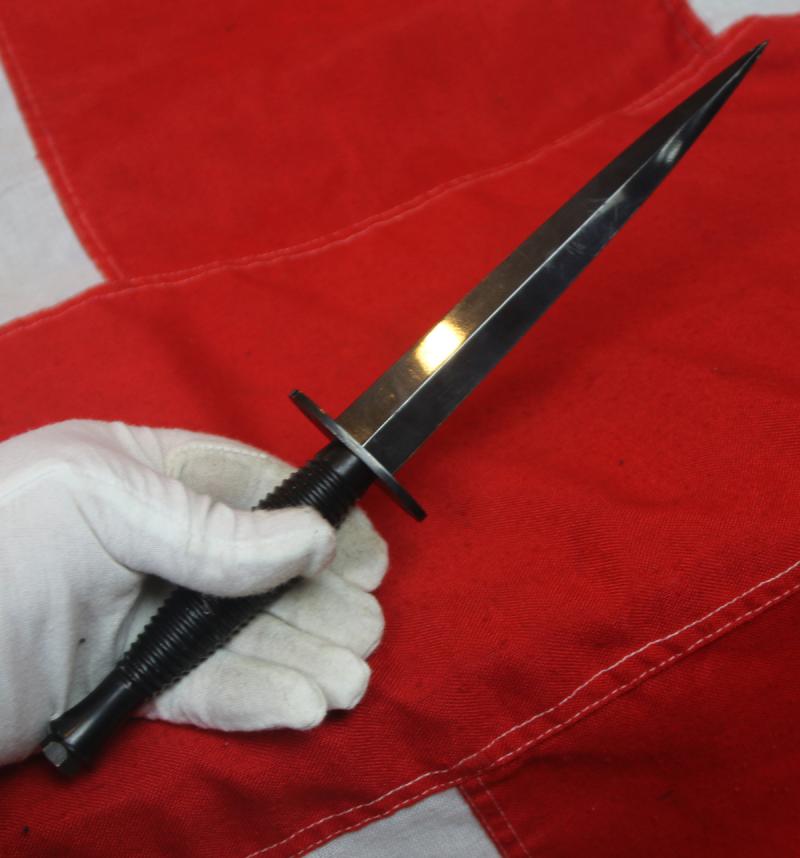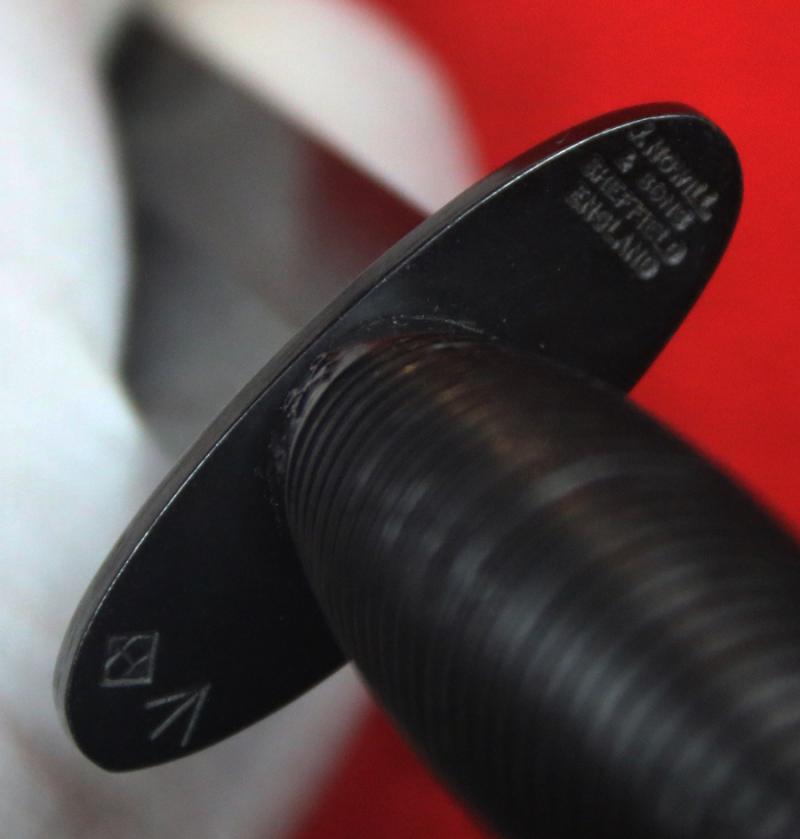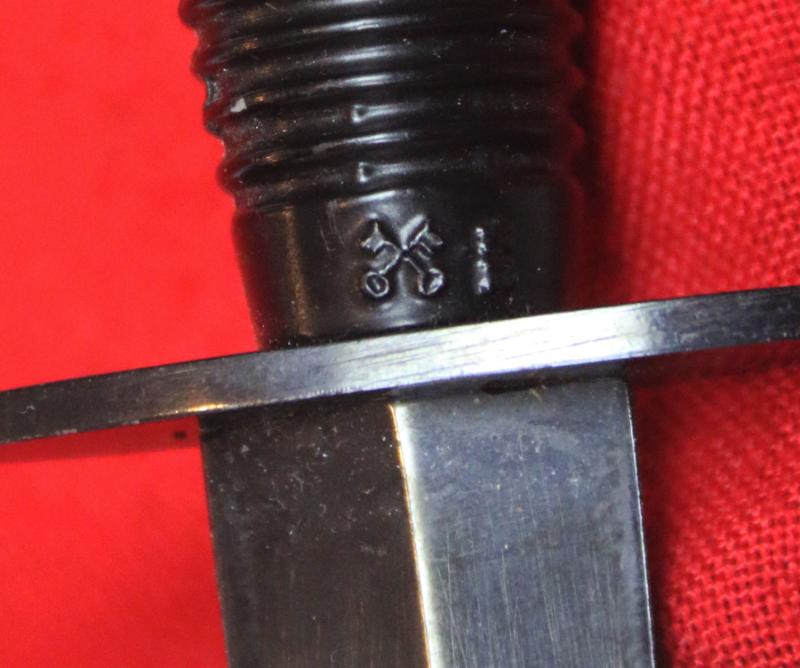A J Nowill & Son 'Crossed Keys' Fairbairn Sykes Commando Knife (Crossed Keys & Star over D) with Broad Arrow & Scabbard
Marked with the crossed keys and * over D on the hilt which is J Nowill & Sons mark, plus, a Broad Arrow mark and diamond stamp. The Broad Arrow was a Government ownership mark was phased out in the 1980's.
The cross keys are the makers mark of John Nowill & Sons, Sheffield, established 1700.The British Fairbairn Sykes dagger officially made, issued service dagger, was created for the newly formed 'Special Forces' commandos. The story about the Fairbairn Sykes Fighting knife starts in England 1940.
In 1940 the British formed special commandos to carry out raids. The initiative came from Winston Churchill in 1940. On the 8 June 1940, Section M09 of the War Office was brought into being. The name commando was taken from small effective mobile Boer units during the war in South Africa 1899-1902.
Two of the first instructors were Captain William Ewart Fairbairn (b. 28 February 1885, d. 20 June 1960) and Captain Eric Anthony Sykes (b. 5 February 1883, d. 12 May 1945). These middle aged gentlemen trained the young soldiers in a new and difficult mode of close-combat fighting at the Commando Basic Training Centre, Achnacarry, Scotland. Churchill described the commandos as 'a steel hand from the sea'
The need for a proper fighting knife, for these commandos, was apparent from the first few weeks of training specialized personnel. As Fairbairn later wrote, "...the authorities did not recognize a fighting knife as part of the equipment of the fighting services. In fact, such a thing as a fighting knife could not be purchased anywhere in Great Britain."
Until now, there had never been an official knife for the British armed services, although many types of knife had been authorised for use in the past. Bowie style knives were carried by some of the Imperial Yeomantry during the South African War of 1900-1901, and in World War I cut-down bayonets, privately purchased hunting knives, or captured German issue folding knives were extensively utilised.
In November 1940 there was a meeting between W. E. Fairbairn, E. A. Sykes and Robert Wilkinson Latham at Wilkinson Sword Company.
Fairbairn and Sykes described the type of knife they envisioned and the purpose for which it was intended. As discussion continued, preliminary sketches were drawn up and modified time and time again. As Robert Wilkinson Latham tells it: 'In order to explain exactly their point, the two men rose to their feet and one, it was Fairbairn my grandfather mentioned, grabbed the wood ruler from his desk and the two men danced around the office in mock combat'. W. E. Fairbairn had also brought with him an example of a suitable fighting knife.
The system they devised utilised techniques drawn from Jiu Jitsu, Gatka, Kung Fu and 'Gutter Fighting'. It proved extremely effective. They were natural choices for the job. Both had served in the Shanghai Municipal Police Force, facing death daily in the dark, narrow streets and alleys of the city against armed thugs and organised gangs. In Shanghai they had made some fighting knives out of bayonets. The meeting resulted in the Fairbairn Sykes Fighting knife that was manufactured by Wilkinson Sword Co. They eventually changed the design a number of times to evolve into the current 3rd pattern. The 1st pattern is by far the rarest, and the fewest types of FS ever made, as the second pattern, and the other variant's were produced fairly quickly after the first pattern's original order from the British Government, issued on the 14th November 1940, was fulfilled by January 1941. 6¾” double edged blade in forged carbon steel with blued finish. Cast metal alloy handle with steel guard. Original design, 3rd Pattern. current post war pattern, Falklands to gulf war period, apparently bought by original deceased owner, a one time commando, around 30 years ago, and kept in storage for around 20 years
Overall in superb condition with fully mirror blued blade, blacked ribbed 3rd pattern FS knife grip, {with service wear marks} blackend crossguard with all the markings as previously described. Brown leather scabbard with stitching tabs and blackened brass chape. Elastic hilt retainer. One tab partially removed
Code: 25070




